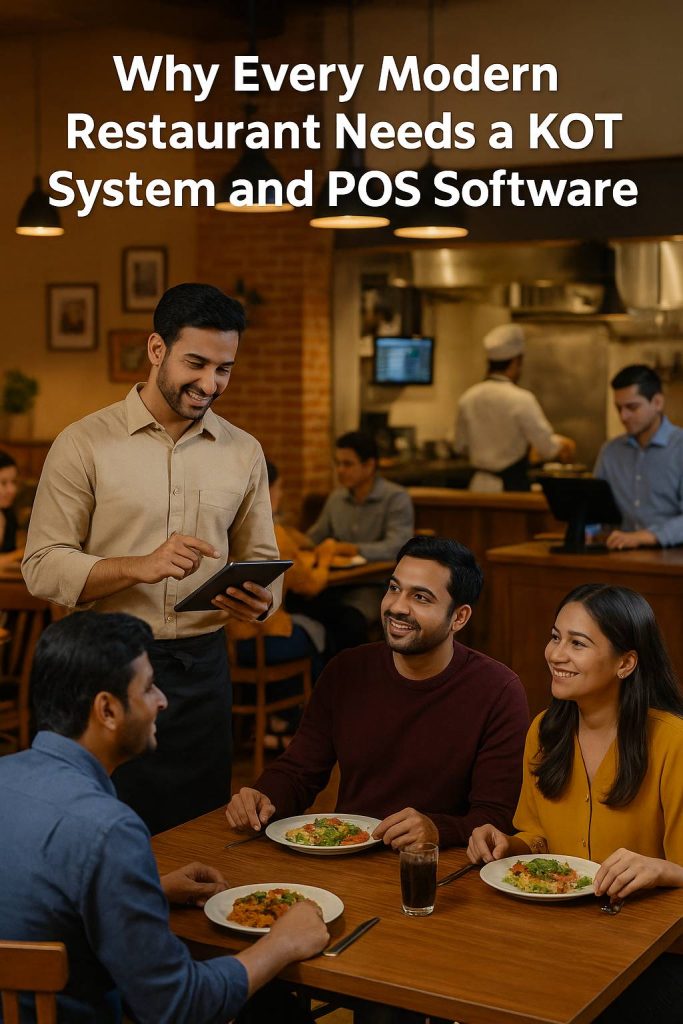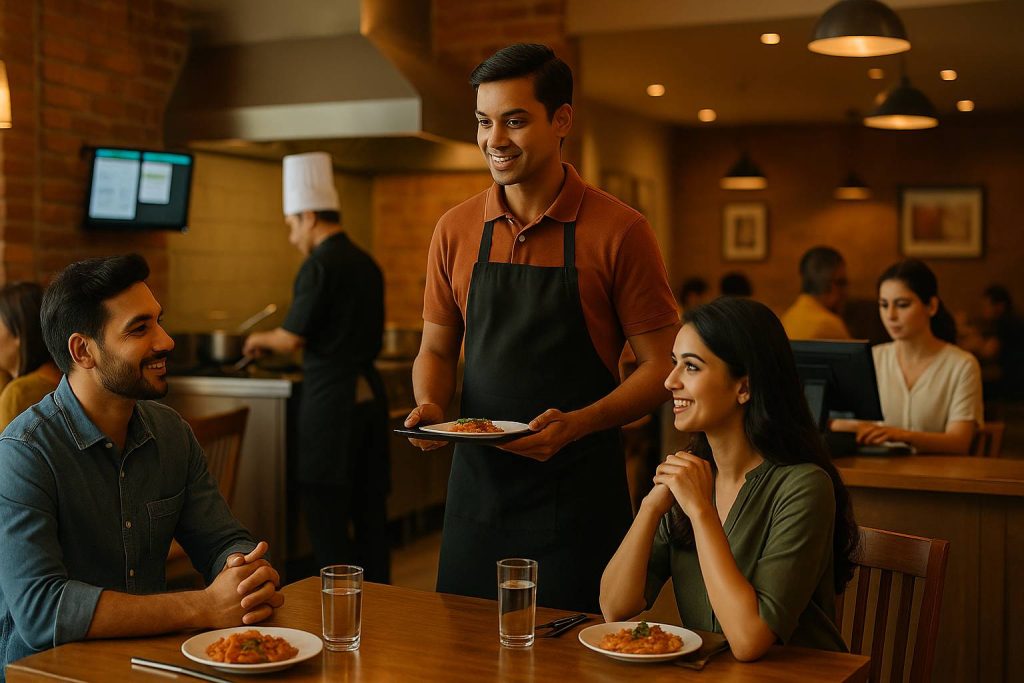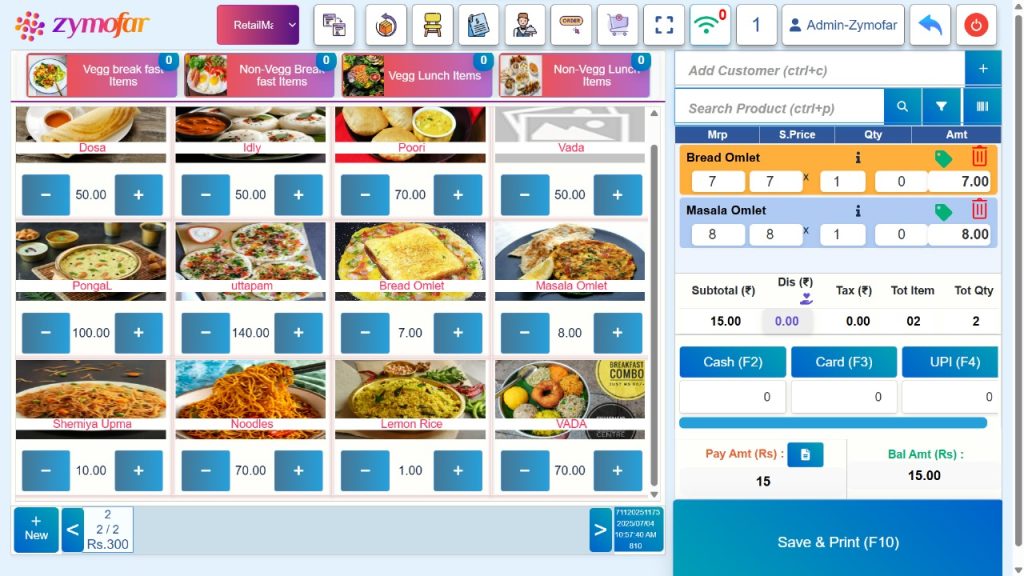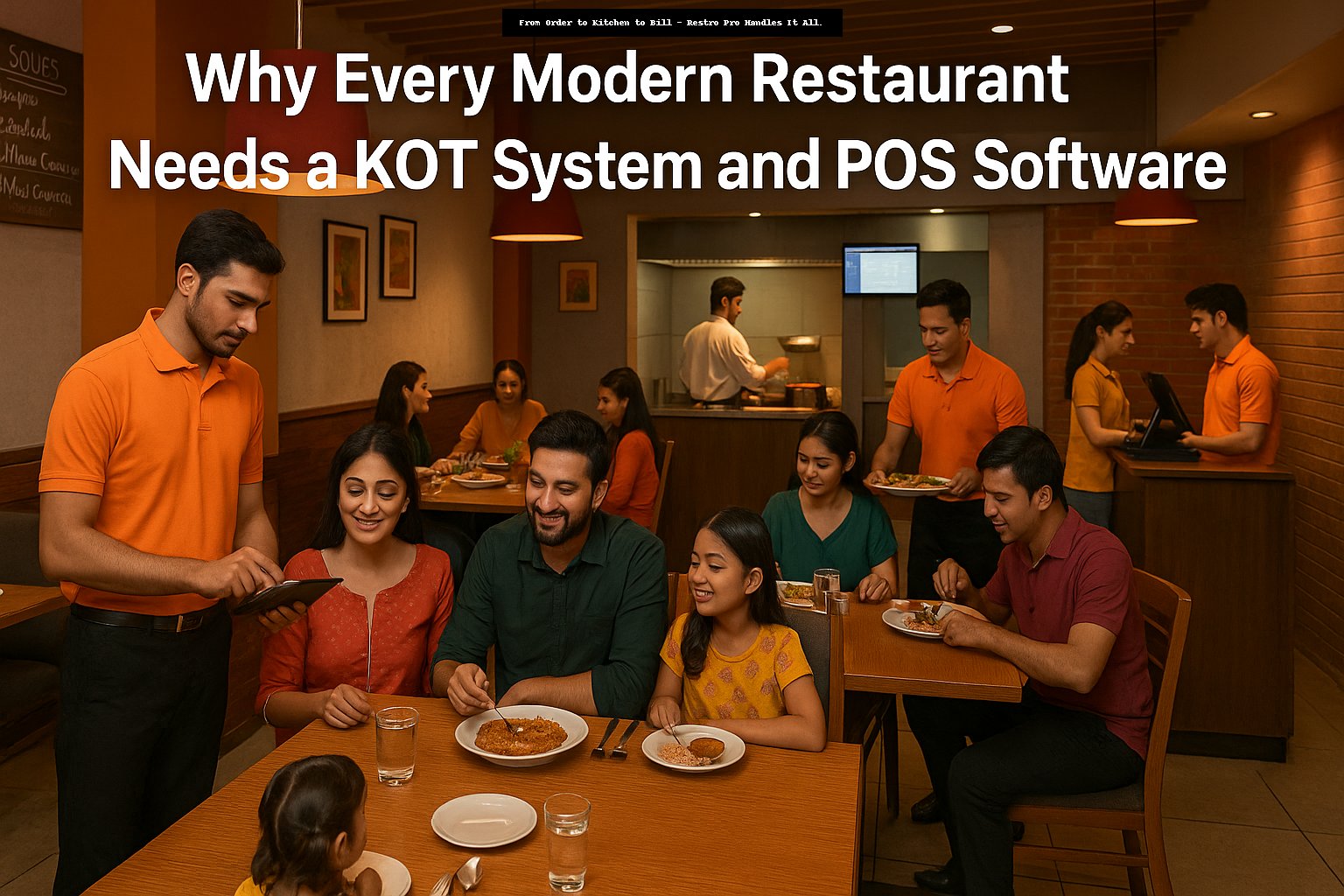In today’s fast-paced hospitality environment, technology is no longer a luxury — it’s a necessity. As customer expectations grow and restaurant operations become more complex, modern tools like KOT (Kitchen Order Ticket) systems and POS (Point of Sale) software have transformed from optional upgrades into critical business infrastructure.
This article dives deep into why every modern restaurant — from cozy cafés to high-end dining chains — must adopt a KOT system and POS software not just to survive, but to thrive.
Running a modern restaurant is no longer just about great food and friendly service — it’s about efficiency, accuracy, and smart technology integration. In today’s competitive food industry, restaurants that rely on outdated manual processes often struggle to manage growing customer expectations, especially during peak hours. This is where a KOT system (Kitchen Order Ticket) and a POS (Point of Sale) software become not just beneficial, but essential.
Enter KOT and POS: The Smart Duo
A KOT system streamlines how orders are communicated between the front-of-house staff and kitchen, ensuring clarity and speed. A POS system goes far beyond just billing — it’s the nerve center of restaurant operations, tracking sales, inventory, payments, employee activity, and customer data in real-time.
Together, they create a seamless digital workflow that improves accuracy, speed, and transparency at every level of your restaurant.
KOT System: Bringing Precision to the Kitchen
A KOT system ensures that when a waiter or cashier takes an order, the kitchen receives an instant, printed or digital order ticket that is:
- Clearly formatted
- Sorted by category (Starters, Main Course, Beverages, etc.)
- Time-stamped for urgency
- Linked to a table or order number
Real-World Impact:
- No more running between tables and kitchens
- No more lost chits or handwriting errors
- Reduced wait time and higher customer turnover
- Improved coordination between front office and kitchen staff
It also supports modifications like “No onions,” “Extra spicy,” or “Half plate” — all communicated precisely without verbal confusion.
POS Software: The Nerve Center of Smart Restaurants
The POS software acts as the central digital control panel for the restaurant. It handles:
- Order entry (Dine-in, Takeaway, Delivery)
- Automatic KOT generation
- Tax calculation and GST compliance
- Integration with QR code menus, UPI payments, cards, and wallets
- Inventory updates and cost tracking
- Customer loyalty management
- Staff login, attendance, and role-based access
- Daily, weekly, and monthly reports
A restaurant POS isn’t just about collecting payments — it empowers owners to run their operations based on data, not guesswork.

Speed + Accuracy = Better Customer Experience
Imagine a peak dinner rush. Tables are full, customers are ordering fast, and the kitchen is buzzing. In a manual system, this is chaos. With a KOT + POS combo, it becomes organized.
- Waiters input orders from handheld devices or terminals.
- The kitchen receives the order instantly.
- Bills are auto-calculated, including service charges, taxes, and offers.
- Payments are settled quickly with zero manual errors.
Customers enjoy faster service, accurate billing, and smoother checkout — boosting their satisfaction and increasing repeat visits.
Real-Time Inventory Tracking
Every item sold — from a plate of biryani to a soft drink — affects your inventory. With POS-linked inventory management, you can:
- Track ingredient usage in real time
- Get low-stock alerts
- Set reorder levels and automate restocking
- Prevent pilferage and overuse
- Reduce food wastage
This helps keep your Cost of Goods Sold (COGS) under control, ensuring your pricing strategy is profitable.
Data-Driven Decision Making
One of the biggest advantages of having a POS system is the data it generates. With a few clicks, you can view:
- Sales trends by day, time, dish, or staff member
- Top-performing items and underperforming SKUs
- Customer footfall trends
- Profit margins by category
- Peak order times
- Delivery vs. dine-in sales comparison
This allows restaurant owners to make smart decisions like:
- Adjusting prices of high-demand items
- Running offers during low-footfall hours
- Replacing low-performing dishes
- Optimizing staff schedules
- Expanding profitable menu categories
Taxation and Compliance Made Easy
Managing GST manually is complex, especially with multiple tax rates (5%, 12%, 18%) and varying formats (CGST, SGST, IGST). A POS system:
- Automatically applies correct tax rates
- Generates tax invoices and summaries
- Prepares reports for GST filing
- Keeps a clean audit trail
During tax season or financial audits, your POS software becomes your best ally — no more scrambling through paper bills or Excel sheets.
Employee Performance & Accountability
A modern POS system allows login-based tracking. You can assign roles and permissions for:
- Waiters
- Kitchen staff
- Cashiers
- Managers
Every action is time-stamped and user-tagged. You can measure:
- Orders taken per staff
- Time taken per table
- Total sales per shift
- Voided or cancelled bills
- Customer feedback per table
This helps in performance reviews, training, and preventing misuse.

Centralized Control for Multi-Outlet Chains
If you operate more than one restaurant, cloud-based KOT and POS systems are a must. You can:
- Monitor all branches in real-time
- Sync menu pricing and offers across outlets
- Compare sales across locations
- Track inventory centrally
- Get outlet-specific reports
You get a bird’s-eye view of your business from anywhere in the world — from your laptop or mobile phone.
Loyalty Programs and CRM
With POS software, you can:
- Capture customer data (phone number, birthday, preferences)
- Send SMS/email campaigns
- Offer loyalty points, cashbacks, or coupons
- Track return customers and average spend
This helps convert first-time diners into loyal patrons, improving lifetime customer value.
Digital Transformation of Restaurants
Here’s how a KOT + POS combo transforms different types of restaurants:
Quick Service Restaurants (QSRs):
Faster order taking, reduced queues, kitchen automation, online integration.
Fine Dining Restaurants:
Table-wise order tracking, course-based serving, digital menu displays, split billing.
Cloud Kitchens:
Centralized online orders, stock control, rider tracking, multi-brand management.
Cafés and Bakeries:
Barcode scanning, combo offers, daily reports, SMS alerts for pickups.
Cost vs. Value: Is It Worth It?
Some restaurant owners hesitate due to the initial cost of setting up a POS and KOT system. But consider the ROI:
- Fewer staff required to handle the same volume
- Prevention of billing mistakes
- Lower inventory losses
- Higher customer satisfaction
- Better staff accountability
- Faster service during rush hours
In many cases, restaurants recover the investment within 3 to 6 months through operational savings and higher sales.
Future-Proofing Your Business
As the food industry continues to evolve, customer expectations will rise further. Features like:
- Voice ordering
- Self-service kiosks
- Table-side digital menus
- Real-time feedback collection
- WhatsApp-based ordering
- AI-driven recommendations
…will soon become mainstream. Only restaurants with a solid tech foundation like a KOT and POS system will be ready for that future.
Final Thoughts
If you’re still relying on manual processes or outdated systems, you’re not just slowing down your service — you’re losing money, missing data, and falling behind competitors. A robust KOT and POS system is not an optional upgrade anymore — it’s a strategic requirement.
Whether you run a single-location family restaurant or a multi-outlet brand, investing in smart systems like Restro Pro can make your business more efficient, profitable, and ready for long-term growth.
Frequently Asked Questions
1. What is the difference between KOT and POS?
KOT handles internal communication with the kitchen, while POS handles the billing, reporting, and business management functions.
2. Can KOT and POS be used in small restaurants?
Absolutely. Even small restaurants benefit from faster order processing, billing accuracy, and reduced wastage.
3. Do I need internet to run these systems?
Cloud-based systems require internet, but many solutions offer offline syncing capabilities.
4. Is staff training required?
Modern systems like Restro Pro are user-friendly. Most staff can be trained within a day.

In today’s competitive food service industry, restaurants that integrate smart solutions like KOT systems and POS software are not just staying ahead — they’re setting the standard. From streamlining kitchen operations to improving customer experiences and optimizing back-end reporting, the benefits are both immediate and long-lasting.
Whether you run a fine-dining establishment, a busy café, a fast-food outlet, or a cloud kitchen, adopting a comprehensive solution like Restro Pro is the key to transforming your operations and increasing profitability.
Ready to Elevate Your Restaurant?
📲 Try Restro Pro today — the all-in-one restaurant management software built for speed, accuracy, and growth.
🔗 Visit us: https://zymofar.com
📞 Call: 7090335533.


